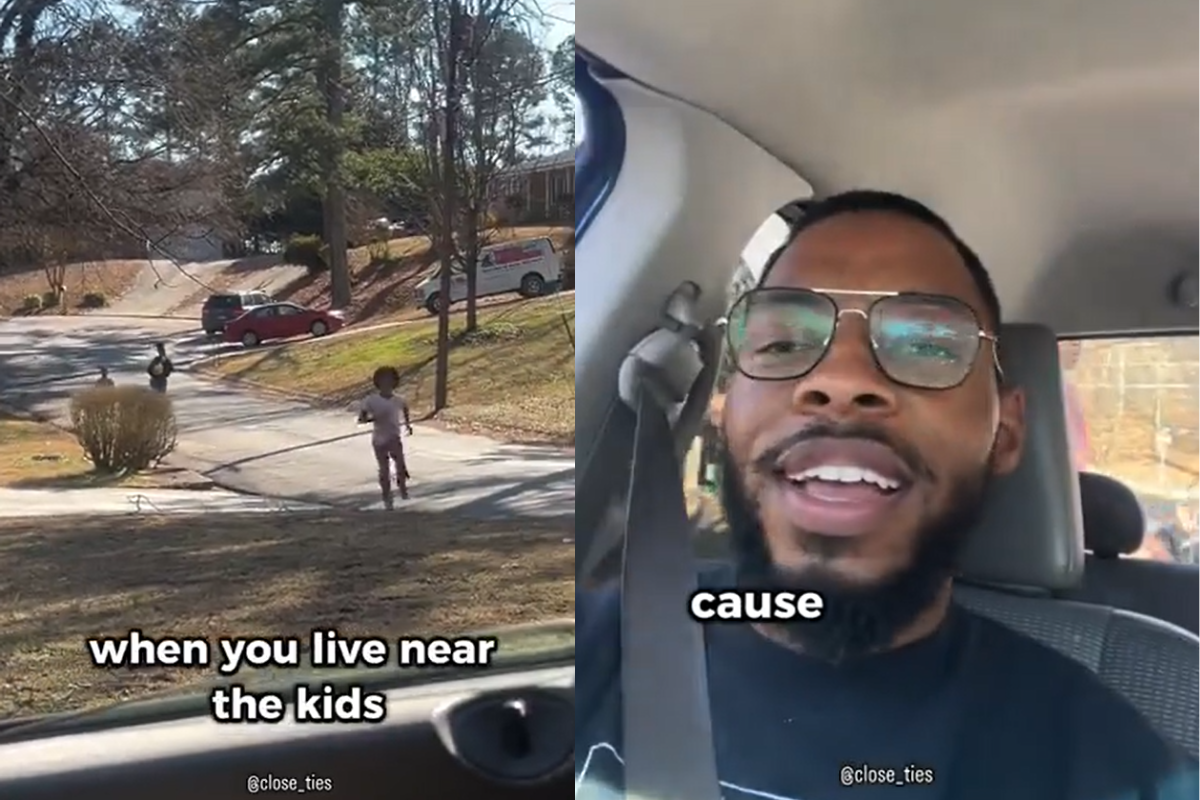Teacher shows what it's like to live right next to his students in heartwarming video
"There’s an extra level of care and understanding when you not only love the children you serve but you also live among them."

Teacher who lives in same neighborhood as students develops special relationship with them.
Certain teachers earn the adoration of their students for going above and beyond their professional role in the classroom. It's something Atlanta teacher Brandon K. Martin has clearly earned.
Martin is the founder and CEO of Close Ties Leadership Program, a nonprofit organization created to "equip Black boys with the skills and experiences necessary to lead in the pathways of their choice by providing early exposure to college and career opportunities, in-school mentorship, and individualized social-emotional support."
He shared a heartwarming video with his followers on social media capturing his experience as a teacher who lives in the same neighborhood as his students. Even outside the classroom, his pupils are eager to see him and spend time with him. "When a teacher walks the same streets, hears the same sirens, sees the same sunsets the lessons run deeper," he captioned the post.
In the video, Martin films his students running towards him as he is parked in his car. He's happy to see them, and more and more student start to assemble, some trying to jump in his car.
"When you live near the kids and they just run to you when you ride past them," he says. "Hello kids. Oh my god, Adisa! Get out! Oh my gosh, ridiculous! I'm about to sell my house so I don't live in the neighborhood anymore, because I'm driving home and look what happens."
The camera pans to the trunk of Martin's truck, and a gaggle of students have piled in to catch a ride and just be close to him. "When I decided to become a teacher, there was no doubt that I wanted to return to my hometown of Southeast Atlanta to do so. Eleven years later, I still share the same neighborhood with the kids I serve which makes moments like this a normal part of my routine," he added in the caption.
He went on to explain the power of living close to his students. "There’s an extra level of care and understanding when you not only love the children you serve but you also live among them," he wrote.
Martin adds that his role as an educator and mentor is one he holds with great weight and zero resentment. "From checking the mail to grocery shopping to grabbing dinner… I will always hear 'Hey Mr. Martin!' I couldn’t get away from them even if I wanted to!"
And the joyful video earned Martin heaps of praise from viewers. "Thank you for calling them CHILDREN! They are giggling, laughing, smiling, and playing like children. Thank you for not adultifying them. They deserve a childhood," one wrote. Another added, "That's trust. That's comfort. That's security." And another viewer shared, "I love this for ALL of you. These are the same children that will never forget you and take care of you if anything were to ever happen. THANK YOU for loving on those babies!" And another touched viewer summed it up perfectly: "Look at these kids!! These young boys KNOW they have a great teacher that loves and cares about them!! Kids like them need a village behind them and you sir are obviously leading the village ❤️ I can’t even imagine them impact you have these children’s hearts and minds."



 9 months is a very long time to be aboard a boat, even a giant cruise ship. Photo by
9 months is a very long time to be aboard a boat, even a giant cruise ship. Photo by  Pro tip: Don't ask the band on board to play "My Heart Will Go On" by Celine Dion
Pro tip: Don't ask the band on board to play "My Heart Will Go On" by Celine Dion  An Amazon package.Canva Photos
An Amazon package.Canva Photos Parents with baby.
Parents with baby. baby fight GIF
baby fight GIF  These matching bunny ears though.
These matching bunny ears though.  Many adult twins regret that their names are so closely linked together.
Many adult twins regret that their names are so closely linked together.  "Bought an espresso machine, took some time to learn how to dial it in and pull a proper shot."
"Bought an espresso machine, took some time to learn how to dial it in and pull a proper shot." "Frozen meals are just as unhealthy, but much cheaper."
"Frozen meals are just as unhealthy, but much cheaper." "I’ve embraced the gray!"
"I’ve embraced the gray!"  "Bidet toilet seat is cheap, easy to install, much easier and faster to use."
"Bidet toilet seat is cheap, easy to install, much easier and faster to use." Tony Hawk hits a big trick at the X Games
Tony Hawk hits a big trick at the X Games  Tony Hawk: Excellent human
Tony Hawk: Excellent human